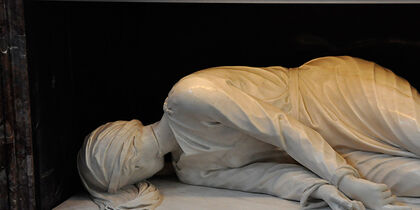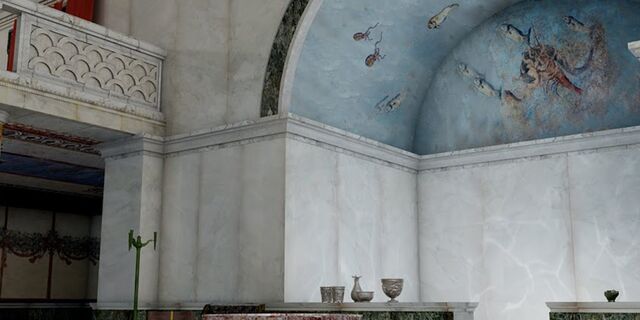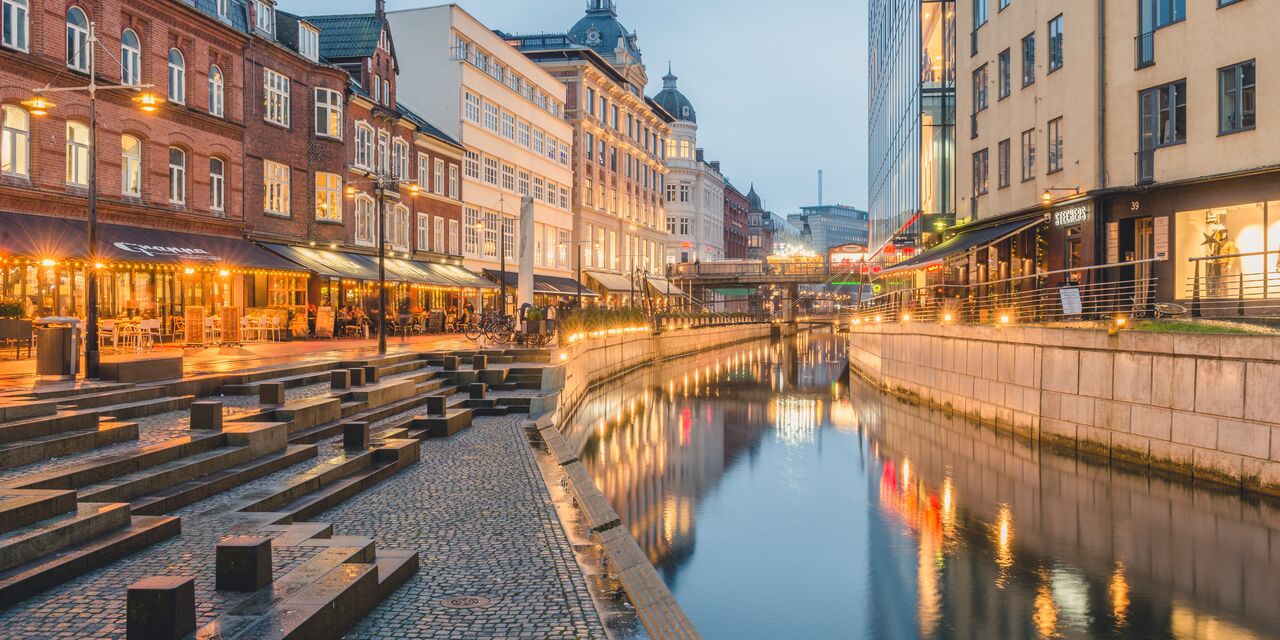
The catacomb of St. Cecilia
The little Vatican
There is an air of mystery in the corridors. The catacombs count no fewer than 4 storeys and some are 20 metres below ground. The most important of the various sections is the popes’ area, also known as ‘the little Vatican’. The popes’ crypts of St Callixtus are considered the most beautiful in the catacombs and original inscriptions are still visible in the walls. The crypt of St Cecilia is another highlight. St Cecilia, patroness of music, was buried here for 5 centuries. She died a martyr's death around the year 230 and her body was missing for a long time. Her tomb was rediscovered with the catacombs of St Callixtus in 820. Pope Paschal I gave the order to rebuild a church in the place where she had died and transferred her body there. The basilica of Santa Cecilia can still be admired in the charming neighbourhood of Trastevere.
Underground symbolism
The hallways and rooms of the catacombs are richly decorated with Christian symbols. As Christians could not practice their faith openly at the time, they painted and carved symbols to express their beliefs. The best known are the monogram of Christ, the fish and the Good Shepherd. The monogram consists of the Greek characters X and P, the first two letters of the Greek word for Christ. If they are engraved on a tomb, this means that a Christian is buried there.
























